#urban native era
Text

7 notes
·
View notes
Text

September 28, 2023- Leaving her hotel in Paris
Urban Native Era ‘You Are on Native Land’ ($34.99).
6 notes
·
View notes
Text

Saturday, September 3rd 2022
Hazy, Lazy
Burning through my trees
#quite literally surrounded by wildfires#hurts to breathe#turn up#love the easy ride on the flathead tho#me#Flathead#Montana#you are on native land#urban native era#kayaking#outdoors#wild fire season#dogs of tumblr#the story so far#tssf#lyrics#pop punk#Emo#alternative#yallternative
8 notes
·
View notes
Text
omg Ashley Johnson & I can be hat twins 🥺
2 notes
·
View notes
Photo

‘You Are On Native Land’ Dad Cap from Urban Native Era
#fashion#style#shopping#native american heritage day#shop#hat#dad hat#accessory#accessories#native american#urban native era#indigenous
0 notes
Text
"The knife is a weapon of the Other"


"The emerging martial art of Bartitsu, appearing in middle-class magazines during the Boer War, was the encapsulation of British civilian gallantry. Yet Bartitsu would have slid into obscurity had it not been for its curious appearance in the Sherlock Holmes canon. The final showdown of the ‘duel’ between Holmes and Moriarty is a wrestling match between two Victorian masterminds. When Holmes returns to London he tells Watson that he and Moriarty went to battle at the Reichenbach Falls unarmed. Holmes managed to ‘slip through’ Moriarty’s grip as he possessed ‘some knowledge’ of ‘baritsu, or the Japanese system of wrestling’, adding that the art had on occasion been useful to him.
Founded in the 1890s by an Anglo-Scottish engineer, Edward William Barton-Wright (1860–1951), Bartitsu was a synthesis of British boxing, French la savate (kickboxing) and Japanese jujitsu. Barton-Wright tapped into the need for a bourgeois form of self-defence, something which he could promote as being British and yet was also exotic and refined.
The principal aim of Bartitsu’s promoters was ‘to provide a means whereby the higher classes of society may protect themselves from the attacks of hooligans and their like all over the world’. These urban gangs were a new form of folk devil, descendants of the mid-Victorian-era garotter. While they were armed with clubs, knuckles, iron bars and leather belts, it is doubtful that they carried firearms. Nevertheless, the press did represent the hooligan as a threatening presence.
Perhaps the scares promoted the growth of a burgeoning culture of ‘British’ self-defence which avoided the aggressive and increasingly unmanly action of using a firearm against a ruffianly lower-class opponent equipped only with basic weapons.
Barton-Wright follows a literary tradition when he presents his martial art as a British form of self-defence. Pierce Egan’s well-known self-defence manual was supplemented with a word on the ‘Englishness’ of physical heroism, arguing that ‘Englishmen need no other weapons in personal contests than those which nature has so amply supplied them with’. In 1910 the former lightweight boxing champion Andrew J. Newton said in his manual Boxing that ‘the native of Southern Europe flies to his knife’, whereas the ‘Britisher […] is handy with his fists in an emergency’. Elsewhere it was maintained that the ‘Italian, Greek, Portuguese, or South American’ ‘give preference to the knife’ while the Englishman extols boxing. For Barton-Wright, British boxers ‘scorn taking advantages of another man when he is down’, while a foreigner might ‘use a chair, or a beer bottle, or a knife’ or, ‘when a weapon is available’, he might employ ‘underhanded means’. The views of these articles reappear in a later self-defence manual of 1914, where it is argued that Britons ‘live in a country where knife and revolver are not much in evidence’. This statement about the low number of firearms and edged weapons can be read as an attempt to extol British virtues and is not necessarily representative of reality. The knife is a weapon of the Other. Barton-Wright’s view that English practitioners of Bartitsu are principled men is reflected in the Sherlock Holmes canon, where Holmes never uses a knife, although his enemies, whether foreign or British, do so at times."
— Emelyne Godfrey, Masculinity, Crime and Self-Defence in Victorian Literature (Palgrave Macmillan, 2013) (very abridged)
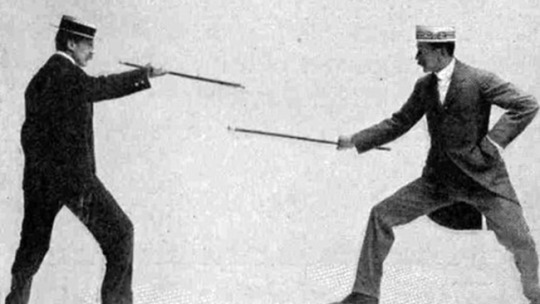
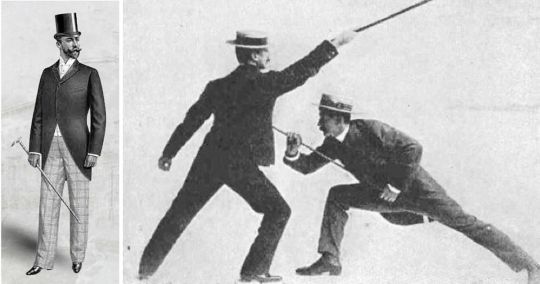
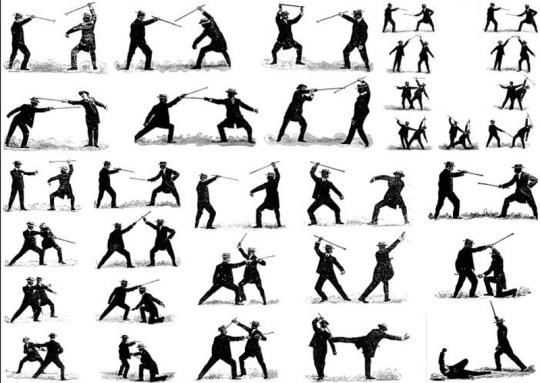
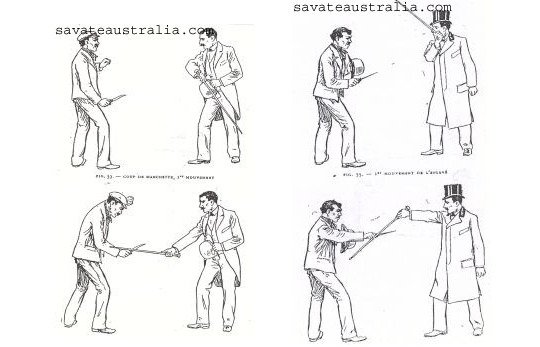
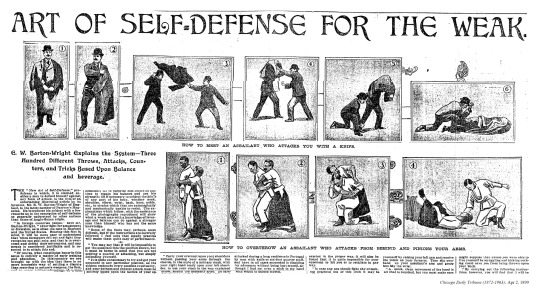
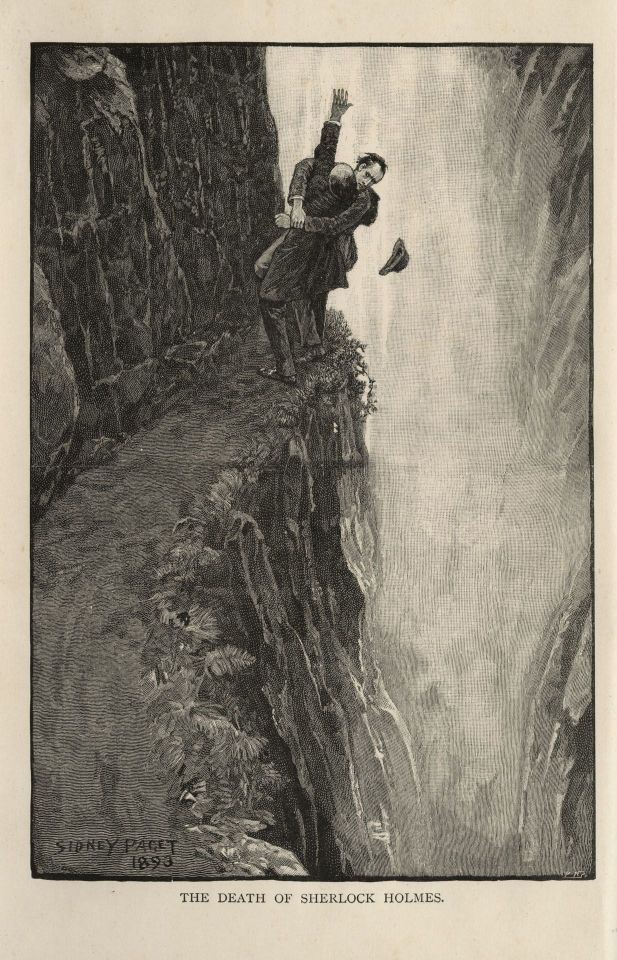
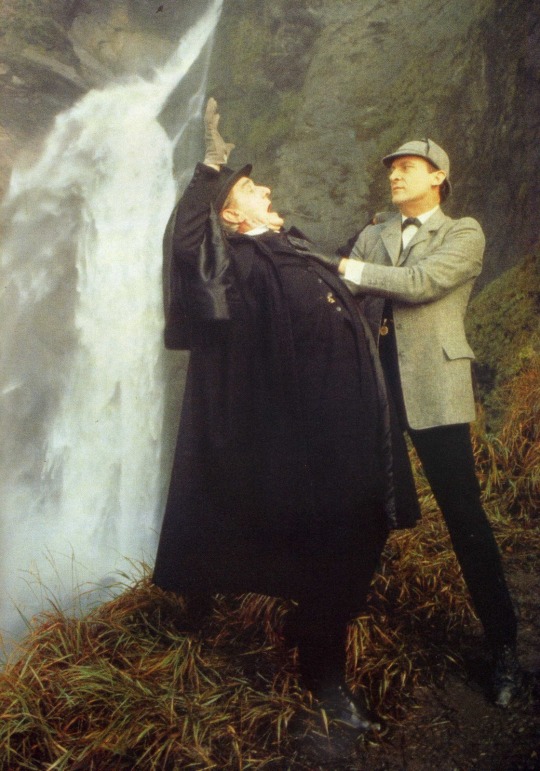
#Masculinity Crime and Self-Defence in Victorian Literature#Emelyne Godfrey#theory#how to stab#sherlock holmes#arthur conan doyle#bartitsu#rogues in fiction#moral panics#dishonour on your cow
598 notes
·
View notes
Text
Asian slaves, indigenous Americans, and identity in colonial era Mexico
The Spanish Philippines had a diverse slave population for local labor and export, including Filipino Indians [i.e. natives; indios], Muslim war captives (moros), and foreign slaves from as far away as Portuguese India.
�� Upon their arrival, chino slaves [i.e. any Asian slave, not just Chinese] were absorbed by the urban economy of Mexico City, where they mainly worked as domestic servants or in textile mills (obrajes) … For their part, working in the city provided chinos with some possibilities for manumission. Chinos in domestic service were especially apt to embrace the limited opportunities available to them and to experience some social mobility. In the obrajes, chinos had few of the freedoms given to domestic servants, but they did benefit from government oversight of the industry. During official visits, chino slaves appealed for protection from overt exploitation by claiming that they were Indians (even if they were from Portuguese India). Remarkably, visiting inspectors listened to their complaints, and they often responded by liberating individual chinos under the assumption that they were indeed native vassals and could thus not be held in bondage. The overall experience of chinos in the viceroyal capital confirms the benefits of living close to the center of colonial power.
The presence of free indigenous immigrants from the Spanish Philippines in Mexico reinforced the idea that all chinos were Indians. The complex governing structure of colonial Mexico involved two republics or political communities (the república de indios and the república de españoles); this organization separated the indigenous majority from everyone else to facilitate the collection of tribute and the ministry of the Catholic Church … [N]ative immigrants from the Philippines purposely sought to confirm their membership in the Republic because corporate status provided personal advantages. They asked to be tallied in tribute rolls in Mexico to benefit from concomitant privileges, such as trading rights and legal representation through the General Indian Court. At the same time, free Filipinos were frequently confused with chino slaves - a situation that had serious consequences for Filipinos' relations with colonial institutions and enslaved individuals. Some immigrants resented having their indigenous identity questioned and sought to maintain a sense of their Indian-ness by keeping their distance from chino slaves. The majority, however, expressed solidarity with chino slaves. Filipino artisans, for example, took on chino slaves as apprentices and taught them marketable skills. Similarly, Filipino traders incorporated chinos into their own credit networks to facilitate self-purchase.
Individual chinos who were manumitted also embraced an Indian identity, regardless of whether they were from Goa, Macau, or other places in South and Southeast Asia. In this way, chinos challenged official attempts to define them solely as former slaves. Instead, they sought to join the free republic. The possibility for this kind of social integration caused widespread concern among slave owners. To defend their property rights, masters started to brand chino slaves on the face, rather than on the chest or arm as they did with Africans, in order to dissuade them from fleeing and "passing" as free Indians. This horrifying development shows that Indian communities welcomed runaway chino slaves and, by extension, that slave owners sought visible markers of their slaves' status.
Excerpt from the Introduction to “Asian Slaves in Colonial Mexico: From Chinos to Indians” (2014) by Tatiana Seijas
111 notes
·
View notes
Text
The state intervenes in children’s use of the city, criminalising children’s uses of the streets [...]. Much of this age-segregation emerged in the so-called Progressive Era (1890-1918) in northern cities of the United States, particularly Chicago. Informed by turn-of-the-century science [...], [t]hese child-savers sought to transform delinquent urban children into upright citizens. In doing so, reformers changed the shape of America’s cities. [...] Only a handful of dedicated playgrounds existed in urban America in the 1890s. [...] Contrasting images of working-class, immigrant youth left unsupervised on the streets with children of their own class, who led increasingly sheltered lives, middle-class urbanites feared for the future of the country. The burgeoning reform class, led by Chicagoans such as Jane Addams, feared so-called “swarms” of children on the streets [...].
---
A new theory of child-development known as recapitulation theory had recently emerged. Proponents of this theory, such as G. Stanley Hall, argued that children passed through (or recapitulated) all the stages of the evolution of the race before they achieved adulthood. [...] Advocates [...] idealised almost all of white boys’ misbehaviour as recapitulation of the race’s past [...]. Although recapitulation theory had room for the sons of European immigrants, [...] children of colour remained outside the narrative of idealised misbehaviour. [...] [W]hite Americans [...] sought to repress the misbehaviour or so-called childhood savagery of children of colour rather than encourage it. Thus, just as white children were encouraged to embrace their inner savage and hold mock powwows and “to play Indian”, Progressive reformers confined Native American children to “civilizing” boarding schools [...].
Growing concerns over masculinity at the turn of the twentieth century limited reforms that could be seen as “molly-coddling”. To completely crush the misbehaving instinct, many middle-class Americans believed, would be just as dangerous [...]. Drawing on recapitulation theory, reformers believed the key to anti-delinquency among [...] European [...] children was providing these children with supervised, orderly places where the misbehaving instinct could safely play out. Central to reformers’ attempts to save but not tame [...] children meant the development of the world’s first municipal playground system in Chicago [...]. By 1915, the city of Chicago ran sixty-six recreation centres [...]. President Teddy Roosevelt heralded it as “one of the most notable civic achievements of any American city.” From Chicago, the idea spread around the country. By 1921, almost 200 cities employed a total of over eleven thousand men and women as year-round playground workers. [...]
---
But the state, too, struggled to control urban childhood. [..] [T]ruant officers [...] struggled with huge caseloads in the early twentieth century. [...] On the streets, escapees evaded police, probation and truant officers [...]. A study of reform schools in and near Chicago in the early twentieth century found two-fifths of detainees left in what was euphemistically called ‘informal departure’ [...]. Escape caused such an issue for reformatories that it was considered among the most serious offences and, as such, carried the heaviest punishments including beatings, being hung by the wrists, being shackled, wearing heavy iron studded shoes, being placed in a tub of ice water, and being caged.
Even as Progressive ideals ostensibly moved prisons and other reform institutions further from the punishment of the body to the treatment of the individual’s soul, in practice, reformatory officials often resorted to physical punishments for the treatment of runaways. [...] [T]he new juvenile institutions of the early twentieth-century differed so wildly in practice from their conception in theory. [...]
---
By the 1930s, however, the concept of the dangerous but ultimately salvageable swarm which had shaped Progressive Era responses to the problems of children and the city was gradually replaced by the far more pessimistic idea of individual deviant personalities. Faith in the ability to transform children through transforming the city collapsed. [...] Juvenile Courts also faced increasing pessimism. In 1936, leading child-saver Grace Abbott asked rhetorically whether the Juvenile Court of Chicago had proved a success or a failure and concluded pessimistically [...].
Delinquency experts increasingly turned to psychiatry to explain and treat criminal behaviour; the psychiatrist supplanted the playground as the key to anti-delinquency.
---
As reformers advocated individualised treatment of delinquent personalities, on the streets, changing priorities of policing increasingly and aggressively targeted children of colour. In addition, suburbanisation was changing the demographics of the inner city. Increasingly, white families were choosing to move out to the suburbs [...]. As inner-city youth became more and more synonymous with minority youth, the urban child seemed increasingly outside the realm of “saving” and middle-class white Americans responded to black youth’s corner culture with intense policing and urban flight, not playgrounds and child-saving. The pessimistic view [...] laid the foundation for the increasingly racialised and violent attempts to control poor urban children in the later twentieth century. [...]
---
Most importantly, Progressive reformers criminalised and delegitimised much of children’s traditional use of the streets, ensuring that age became a crucial component of urban discipline. [...] When encounters with real children transformed institutions and regulations in unexpected ways, the result was increasingly coercive methods and policing.
---
All text above by: Oenone Kubie. “Child’s Play: How Progressive Era Science Shaped America’s Playgrounds.” Oxford Urbanists. 15 September 2019. [Bold emphasis and some paragraph breaks/contractions added by me.]
312 notes
·
View notes
Text
PSA on single-character Chinese names
The usage of single-character names BY THEMSELVES is considered a little odd in modern Mandarin. Multi-character names are fine, for example, Wangji is fine by itself, but if you’re referring to him by birth name, you wouldn’t usually refer to him as JUST Zhan. You will have to use his full name (Lan Zhan), or add a prefix or suffix to the name, like A-Zhan, or Zhan’er. Unfortunately, the Netflix subs of CQL tends to omit the prefixes / suffixes from the names, thus translating A-Ying, for example, as simply Ying. This is an inaccurate translation.
There ARE occasions when single-character names may be used by themselves. For example, when JFM is referring to WWX early in CQL while talking to LQR, he calls him “Ying” and in LWJ’s letter to WWX, inviting him to JL’s hundred day celebration, he also refers to him as just “Ying” near the end of the letter (see below). However, this is somewhat formal dated usage, and is no longer common in modern Mandarin. I believe this is part of a larger evolution of Chinese language away from a more single-character focused lexicon, which I will explain below.

THE EVOLUTION OF CLASSICAL TO MODERN CHINESE
The modern spoken form of Mandarin evolved from an olden form of written Chinese, which I’m going to refer to as classical Chinese for simplicity’s sake (I believe historians actually have different names for different eras of ancient written Chinese). At the same time though, modern Mandarin is VERY different from classical Chinese. Classical Chinese is pretty much like... an entirely different language from modern Mandarin. I’m going to quote this meta which I encourage you guys to read in full for an analysis on LWJ’s speaking style:
文言文 wenyanwen / classical/literary Chinese is related to but distinct from modern Mandarin… Modern Mandarin Chinese as we know and learn it today in classrooms is something that didn’t really get codified until the 20th century… classical Chinese can be summed up, like most things in Chinese, with a four-character idiom: 言简意赅 yanjianyigai. Broken down, we get:
言 yan - words, speech
简 jian - simple, brief
意 yi - meaning, intent
赅 gai - complete, full, comprehensive
Classical Chinese (which is heavily focused on single-character root words, thus condensing a lot of meaning into a relatively short sentence) was largely a written form of Chinese used by elites. Historians do not seem to believe that people spoke classical Chinese, but a vernacular form of Chinese which we don’t have record of. Typically though, languages tend to become increasingly diverse over large swaths of land, which leads to the emergence of dialects native to different regions. As a result, people from different regions may not actually understand each other.
However, China was united as a kingdom over vast swaths of land for many periods in dynastical history. It had a political system where magistrates stationed in even the faraway reaches of the kingdom reported to the emperor and his cabinet of ministers in the capital. As such, if you wanted to be a magistrate, you would have to learn this written form of Chinese, and take the imperial exam to be selected for the position. As a magistrate, you would be expected to correspond with officials from other regions in this written form of Chinese. This written form was thus able to bridge the differences in spoken Chinese.
But according to my Chinese teachers!!! (Disclaimer: they are high school language teachers, not Chinese history professors, so I cannot completely guarantee the historical accuracy of these claims,) When modernization happened, transportation became more advanced and urbanization became more and more of a thing. Thus, society saw a greater intermingling of people from different regions who couldn’t necessarily understand each other in spoken Chinese. This necessitated the emergence of a new common spoken tongue. Modern Mandarin, which is often referred to as putong hua (lit. common language), was thus born.
THE MOVE FROM SINGLE TO MULTI-CHARACTER WORDS
According to my Chinese teachers (see previous disclaimer again), modern Mandarin basically moved away from the single-character focused lexicon of classical Chinese, towards increased usage of multi-character words. For example, the modern word for “conflict” 战争 is made of root words 战 and 争 both of which rooooughly mean “conflict” as well. In a classical lexicon, the root words would likely be used by themselves, but modern Chinese mostly uses multi-character words.
And this, according to my Chinese teachers, was to improve the understandability of spoken Chinese. Chinese language has a GREAT NUMBER of homophones, which can get REALLY FUCKING CONFUSING. The Zhan (战) in “conflict” sounds exactly the same as 站 (to stand) 占 (to occupy) 湛 (as in Lan Zhan), and more. As such, while the root words 战 and 争 may carry the intended meaning perfectly well in writing, in speech, they individually sound like a bazillion other words. Which thus necessitates these multi-character words. 战 may have many homophones, but 战争 has a great deal less homophones.
So why do we generally not do single-character names in speech anymore? BECAUSE IT CAN GET REALLY FUCKING CONFUSING. Like if you wanted to say something as simple and functional as “go to Zhan” (去湛那边), the Zhan of his name (湛) is a perfect homophone for 站 (to stand), so it literally just sounds like “go stand there” 😭😭😭 At least if you use his surname (Lan Zhan), a prefix (A-Zhan), or a suffix (Zhan’er) it becomes a whole lot clearer that you’re referring to a person.
THE TLDR;
This is a very long and roundabout way to say: please don’t replicate the Netflix subs in your fics. If you’re referring to someone with a single-character name, add a prefix or suffix to the name, like A-Cheng, or Cheng’er, or else use the full name, Jiang Cheng. Multi-character names are generally fine, for example, Wanyin, Wangji, or Xichen are all fine. Wuxian seems to be a little bit of a grey area. It does not seem to be used by characters in the novel, probably because it sounds like 无线 (wireless), which is the reason why the Chinese fandom likes to refer to him as “WiFi” 🤣
479 notes
·
View notes
Text




Life in the Slow Lane: The Brown Garden Snail
Perhaps the most widely known member of the mollusk group, the brown garden snail (Cornu aspersum), also known as the European garden snail, is native to the Mediterranean region of southern Europe and northern Africa, and his since spread to every continent except Antarctica. It thrives in temperate zones, particularly in open forests, coastal dunes, and urban parks and agricultural spaces. This spread has largely been facilitated by humans, and may have started as early as the Neolithic era nearly 8500 years ago.
The brown garden snail's name is an excellent descriptor of the species; both the body and the shell are mainly shades of brown. Generally the body is lighter than the shell, and secretes a thin layer of mucus to keep itself moist. The shell is about 2.5 to 4 cm (0.98-1.57 in) wide, while the body itself is roughly 5-9 cm (1.97-3.54 in) long. Body and shell combined, C. aspersum only weighs 15g (0.53 oz) at maximum. The body is made of two parts; the head, which carries the eye stalks, mouth, and sensory tentacles; and the foot, essentially a large muscle which the snail uses to move from place to place. The rest of its organs, including the heart, lungs, stomach, and anus are contained within the shell itself. Only the genital pore, located on the side of the foot, is exposed.
C. aspersum is primarily an herbivore, feeding on leaves, flowers, and fruits, as well as rotting plant and animal matter. In order to obtain the calcium it needs to build and maintain its shell, the European garden snail also occasionally consumes soil. Because of its slow nature, reaching a maximum of only 2.4 mm/s (0.09 in/s), this species is a common food item for other predatory snails, centipedes, glow worms, small mammals, lizards, frogs, and birds. However, the brown garden snail is able to retreat into its shell and produce a thick, frothy mucus membrane when threatened.
Like other terrestrial mollusks, the European garden snail is a hermaphroditic species, possessing both male and female gametes. Individuals may reproduce year round, provided with plentiful resources and good environmental conditions. When two snails encounter each other and wish to mate, each one spears the other with a hard calcite spine, known as a love dart. These darts allow the two to exchange sperm, and the process may take several hours. Afterwards, an individual may store viable sperm for up to 4 years. About ten days after a snail fertilizes its sperm, it lays about 50 eggs in a sheltered area; a single snail may do this up to 6 times a year. Eggs take between 2-4 weeks to hatch, and emerge with a soft shell. It takes about 10 months for juveniles to reach full maturity, and they may live up to 3 years in the wild.
Conservation status: C. aspersum has been rated as Least Concern by the IUCN. In both its introduced and native range, it is considered a pest species due to its consumption of crops. However, this species has also been adopted in some areas as a pet or as an edible delicacy.
If you like what I do, consider leaving a tip or buying me a ko-fi!
Photos
Bill Frank
Alan Henderson
Kostas Zontanos
Rand Workman via iNaturalist
#brown garden snail#european garden snail#Stylommatophora#Helicidae#land snails#snails#gastropods#mollusks#invertebrates#deciduous forests#deciduous forest invertebrates#grasslands#grassland invertebrates#urban fauna#urban invertebrates#europe#southern europe#africa#north africa#animal facts#biology#zoology
107 notes
·
View notes
Text
Even the most nonsensical idioms in the English language originated somewhere. Some terms, like silver lining and tomfoolery, have innocuous roots, while other sayings date back to the darkest chapters in U.S. history. While these common phrases are rarely used in their original contexts today, knowing their racist origins casts them in a different light.
1. Tipping Point
This common phrase describes the critical point when a change that had been a possibility becomes inevitable. When it was popularized, according to Merriam-Webster, it was applied to one phenomenon in particular: white flight. In the 1950s, as white people abandoned urban areas for the suburbs in huge numbers, journalists began using the phrase tipping point in relation to the percentage of non-white neighbors it took to trigger this reaction in white city residents. Tipping point wasn’t coined in the 1950s (it first appeared in print in the 19th century), but it did enter everyday speech during the decade thanks to this topic.
2. Long Time, No See
The saying long time, no see can be traced back to the 19th century. In a Boston Sunday Globe article from 1894, the words are applied to a Native American speaker. The broken English phrase was also used to evoke white people’s stereotypical ideas of Native American speech in William F. Drannan’s 1899 book Thirty-One Years on the Plains and in the Mountains, Or, the Last Voice from the Plains An Authentic Record of a Life Time of Hunting, Trapping, Scouting and Indian Fighting in the Far West.
It’s unlikely actual Native Americans were saying long time, no see during this era. According to the Oxford English Dictionary, this type of isolating construction would have been unusual for the indigenous languages of North America. Rather, it originated as a way for white writers to mock Native American speech, and that of non-native English speakers from other places like China. By the 1920s, it had become an ordinary part of the American vernacular.
3. Mumbo Jumbo
Before it was synonymous with jargon or other confusing language, the phrase mumbo jumbo originated with religious ceremonies in West Africa. In the Mandinka language, the word Maamajomboo described a masked dancer who participated in ceremonies. Former Royal African Company clerk Francis Moore transcribed the name as mumbo jumbo in his 1738 book Travels into the Inland Parts of Africa. In the early 1800s, English speakers started to divorce the phrase from its African origins and apply it to anything that confused them.
4. Sold Down the River
Before the phrase sold down the river meant betrayal, it originated as a literal slave-trading practice. Enslaved people from more northerly regions were sold to cotton plantations in the Deep South via the Mississippi and Ohio rivers. For enslaved people, the threat of being “sold down the river” implied separation from family and a guaranteed life of hard labor and brutal conditions. A journal entry from April 1835 mentions a person who, “having been sold to go down the river, attempted first to cut off both of his legs, failing to do that, cut his throat, did not entirely take his life, went a short distance and drowned himself.”
5. No Can Do
Similar to long time, no see, no can do originated as a jab at non-native English speakers. According to the OED, this example was likely directed at Chinese immigrants in the early 20th century. Today, many people who use the phrase as general slang for “I can’t do that” are unaware of its cruel origins.
6. Indian Giver
Merriam-Webster defines an Indian giver as “a person who gives something to another and then takes it back.” One of the first appearances was in Thomas Hutchinson’s History of the Colony of Massachuset’s Bay in the mid 18th century. In a note, it says “An Indian gift is a proverbial expression, signifying a present for which an equivalent return is expected.” In the 19th century, the stereotype was transferred from the gift to the giver, the idea of an “equivalent return” was abandoned, and it became used as an insult. An 1838 N.-Y. Mirror article mentions the “distinct species of crimes and virtues” of schoolchildren, elaborating, “I have seen the finger pointed at the Indian giver. (One who gives a present and demands it back again.)”
Even as this stereotype about Indigenous people faded, the phrase Indian giver has persisted into the 21st century. The word Indian in Indian giver also denotes something false, as it does in the antiquated phrase Indian summer.
7. Cakewalk
In the antebellum South, some enslaved Black Americans spent Sundays dressing up and performing dances in the spirit of mocking the white upper classes. The enslavers didn’t know they were the butt of the joke, and even encouraged these performances and rewarded the best dancers with cake, hence the name.
Possibly because this was viewed as a leisurely weekend activity, the phrase cakewalk became associated with easy tasks. Cakewalks didn’t end with slavery: For decades, they remained (with cake prizes) a part of Black American life—but at the same time, white actors in blackface incorporated the act into minstrel shows, turning what began as a satire of white elites into a racist caricature of Black people.
#The Racist Origins of 7 Common Phrases#racism#idioms#colloquialisms#caricature#mocking phrases#white supremacy#hate speech#how to identify hate speech
9 notes
·
View notes
Text
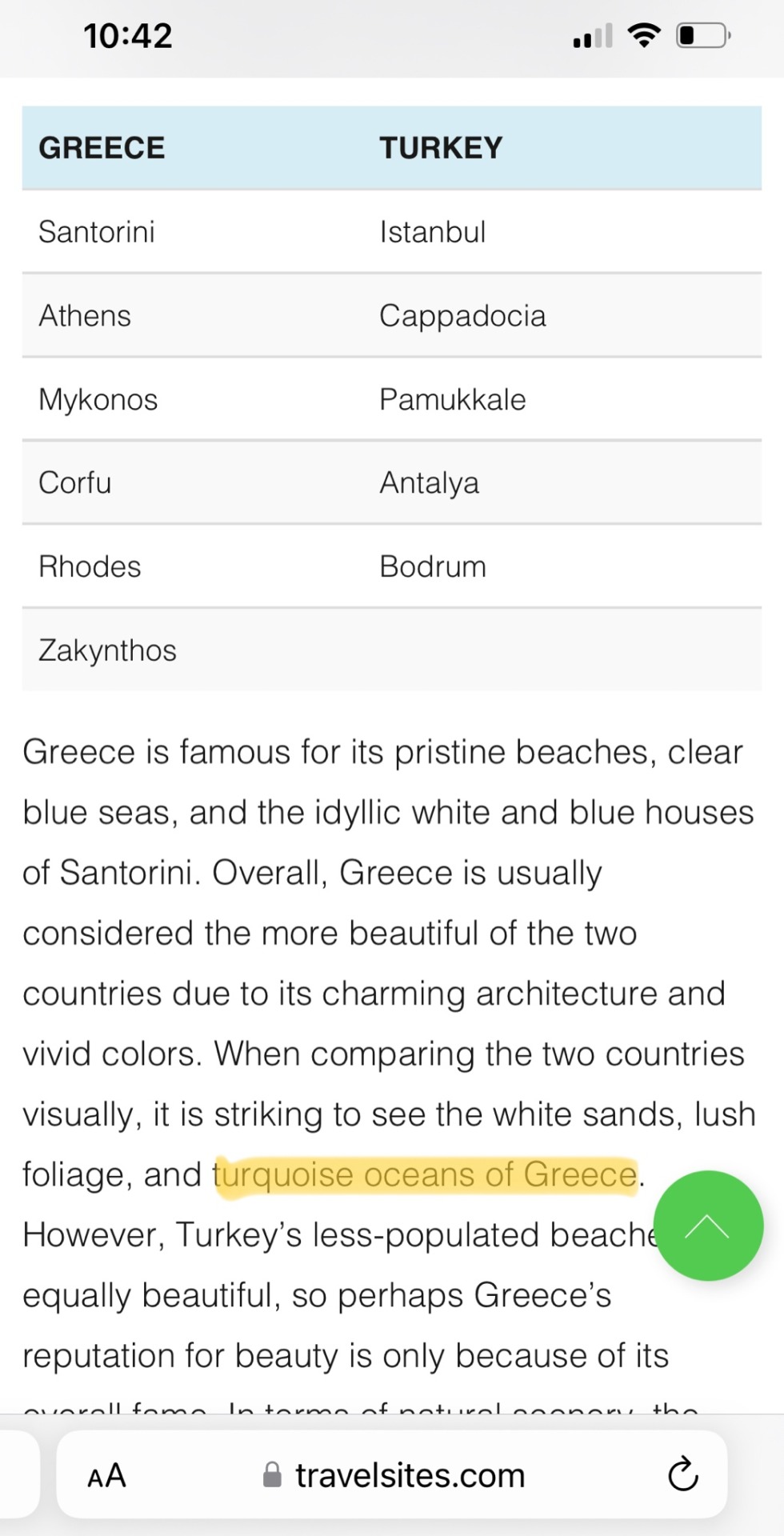
Now stfu. Thanks :)
Oh wow. I kinda expected, you know, a page in an encyclopedia or any other page with educative content about Greece or geography in general, but you come proudly with a random Turkey vs Greece article by a David dude.
Honey. You will find anything spelled out on the Internet, including actual mistakes. That's why we check our sources. In fact, this article has many other mistakes as well.

False. Turkey gets more tourists than Greece.

False. The Turkish Republic is exactly 100 years old and the Ottoman Empire lasted about 600 years.

Where to start with this one... If Greece is famous for anything, that's not its urban locations.

Mistake #1: Aya Sofya is not famous because of its minarets and Mistake #2: Ephesus was built in the 10th Century BC, so its heyday or point in time it should be referred with was at least 900 years before the Golden Age of the Roman Empire. Although granted, a lot for its preservation was done in the Roman era.

OMG American mistake #18361986: Greece is NOT a tropical country and HAS ZERO tropical islands

Built by WHOM of WHAT? Perhaps David meant King Antiochus I Theos of Commagen, check an actual source for once

David is straight out pulling facts out of his ass, isn't he

"The major cities like Istanbul and Santorini" the guy is either trolling or hasn't stepped one foot in Greece ever. Santorini is a tiny island and its "major city" Fira has 1,600 residents LMAO my grandparents' godforsaken village has more than that

The guy does a super delicate trolling, I give him that. The guy says things like oceans and tropical and major city of Santorini but has also come across Slav-Macedonian. Amazing combo. David is a man of contrasts. For the record, I haven't come across it and I have lived all my life here. I mean, it exists but you have to struggle to find its speakers and they are all bilingual anyway.
Overall David, that international traveller, does not really mean bad... apart from this????

That was very professional there. But even though he says this, he proceeds to say equally good stuff about both countries, I 'd say. The article is a confusing text by a confused man. But that's not the point. The point is his myriad of inaccuracies and mistakes (as called out in several of the comments), some very typical of Americans, like mistaking Greece for a tropical destination or confusing oceans and seas.
Which brings us to you @libbyhaiku .
I believe, very politely, I added in the tags of that damn post this:

That really set you off. You sent me an ask, telling me to fact check in google... what... whether the country of which I am a native has seas or oceans?
And I did! Even though I don't need to fact check whether Greece has oceans. And once again every website of any actual integrity, apart from the David dude, repeats this over and over. Greece has seas. Which I told you.
Furthermore, @jamy-libations searched for it on their own accord, and to my understanding they are not Greek or native Greeks, they told you and you responded as you responded to me.

I wonder, did you tell them to shut the fuck up too in your message?
So, here's the answer. You and David are making a very typical American mistake, or maybe its not a mistake within your very own borders, which is that because the USA is surrounded by oceans, you think ocean is the standard generic term for sea.
In fact, the word ocean can be used in two ways: either as THE Ocean, which is the entire body of saltwater of the earth and derives as a concept from the Greek mythology, just like the very word derives from Greek so I know well what it means, or to describe the five major bodies of water: the Pacific, the Atlantic, the Arctic, the Indian and the Southern ocean.
Greece, unlike the USA, is surrounded by neither. Greece is surrounded by the Mediterranean Sea and its adjacent smaller seas like the Ionian, the Aegean, the Libyan, the Cretan, the Myrtoan, the Ikarian, the Karpathian Seas. While the Mediterranean Sea is connected to the Atlantic Ocean through the very narrow strait of Gibraltar, it is so enclosed by land and it exchanges so little water with the Atlantic that it is both traditionally and scientifically considered its own body of water, a Sea, and not just a general area of the Atlantic Ocean.
Here's to explain to you the difference between an ocean and a sea by an actually serious source.

Here is a map of the Mediterranean Basin. As you see, it is almost entirely enclosed and it does not earn the status of being an ocean, let alone containing a multitude of them. Greece is also in the far end of the Mediterranean, as apart from the Atlantic as possible. None of the countries in the Mediterranean Basin have access to an ocean or oceanS, apart from Spain, France and Morocco, as evident here.
Now, I would honestly have not cared or written so much if you didn't throw a tandrum for a tiny tag in a post I reblogged in a positive manner. Unfortunately, you chose the asshole way.
And since we're at it that photo was actually taken in the Italian....... oceans

and it's edited... but whatever, we have this species too.
#submission#greece#mediterranean sea#i can't believe i have to fight a foreigner over whether Greece has oceans#libbyhaiku#ffs#the entitlement
41 notes
·
View notes
Photo

February 25, 2023- Out in NYC
Urban Native Era You are on Native Land (sold out).
2 notes
·
View notes
Note
My character learned to fight with staves and spears, what would it be better for her to take to a “DnD style” dungeon? (The world is similar to DnD world, although the spear is seriously underpowered in the rules)
So, I'm going to start with a couple nitpicks.
As someone with tabletop RPG experience, labeling it as, “D&D world,” is a really weird thing to read. D&D is primarily three distinct things. The rule systems themselves, and at this point we're up to the sixth or seventh major rules iteration. D&D as settings, except you'll almost never hear this one phrased that way. Finally, D&D as branding, which is extraordinarily nebulous, and tends to pick iconography out of the rules or settings. Simply identifying something as D&D could refer to any of these.
Officially, D&D has roughly 20 campaign settings. Any one of those could be categorized broadly as, “a D&D world.” Depending on the edition, the default setting is either Greyhawk or Forgotten Realms. These are entirely different worlds. Greyhawk is more of the conventional medieval fantasy world, while Forgotten Realms is a setting with mountains (in some cases, literally) of fallen empires, and the world is filled with ancient ruins, in addition to the current civilizations. Both of these are extremely detailed settings with thousands of pages of background lore.
Beyond that, Dragonlance, Dark Sun, Ravenloft, Planescape, Ravnica, Eberron, Spelljammer, and Urban Arcana, all come to mind as official TSR/Wizards of the Coast settings. And it's extremely likely that even players with an extensive familiarity with the ruleset missed at least one of the above names. This isn't even counting a lot of minor settings, or the fact that Planescape and Spelljammer are both multi-world settings, and the fact that a lot of these settings technically cross over. There are Spelljammer ports on Faerun (the main continent of Forgotten Realms), and races native to Planescape (in particular the Tieflings) have become a mainstay of the games, as they wander across the planes, to the point that Planescape's Tieflings and Aasimar exist in Pathfinder.
So, “The D&D world,” doesn't really say much.
With a lot of tabletop RPGs, the setting is analogous to the ruleset. When you're talking about running a Shadowrun campaign, or a Vampire: The Masquerade chronicle, those are specific worlds. The biggest ambiguity is which edition. However, when you say you're participating in a D&D campaign, that doesn't tell you much on its own.
If you're asking from a rules perspective, that's going to depend on the edition, and this is where stuff gets a little complicated.
If you're working with the idea of a D&D style dungeon, it's probably best to consider what era of game design you're looking at. There are a couple ways you can approach dungeons.
So, basic thoughts on dungeons.
Small dungeons are designed to be finished in a single session or two. You're probably looking at a few combat encounters. But, the main arc is that your characters travel to a dungeon, they do whatever they were planning to, and get out. You might have as many as four rooms, but generally these are pretty compact spaces.
Large dungeons can either be designed around the adventurers spending multiple days in the dungeon itself, or they may be traveling in and out and resting somewhere outside. (In some cases, you'll even have towns or inns set up over the dungeon. So your adventurers are all in one compact space.)
Additionally, large dungeons can be designed around the idea that the players will penetrate a few levels at a time, gradually working their way deeper over time (as they deal with other events and problems), or it can be a very long excursions, with adventures scavenging and hunting in the dungeon for days or weeks as they progress.
In the case of truly monstrous dungeons, they might even be bringing enough personnel and resources to set up various base camps and have a full supply lines running back to the outside world, as they gradually expand their control over the dungeon.
Sort of in parallel to this, it's worth thinking about what the dungeon is. The basic concept is often, as the name implies, some kind of semi-ruined castle prison. But, you'll also frequently see crypts, and caves as dungeons. Especially as small ones. At the same time, it's worth considering expanding your concept of a dungeon a bit. Ancient ruins, old fortresses, necropolises, abandoned mines, and sewers are common. (Sewers are a little unrealistic, as real ones don't tend to be massive underground pipes you can walk in.) What's less common are massive shipwrecks, overrun cities, entire islands with dangerous flora and fauna (or just pirates), fallen cities (where entire city districts collapsed during an earthquake and now exist below ground), plague ridden city districts (plagues can actually be a lot of fun, because it will let you transform familiar territories into hostile ones as the campaign progresses. Pathologic does this extraordinarily well.) In a rather famous D&D adventure (Expedition to the Barrier Peaks), one of the dungeons is a downed spacecraft. This is before we consider dungeons with impossible geometry, such as ones that leak over into another dimension (possibly as a result of magical experiments gone wrong, or ones that exist in the dreams or psyche of an individual. (For the record, I'm not a huge fan of psychic dungeons as a play experience, but they can be done well. I've simply had some bad experiences with the concept.) Shadowrun had a related concept, with cyberspace (called, “the matrix”), as a parallel space where hackers would engage in combat parallel to the events happening out in the real world. It's weird concept, but one that you might get some millage out of, and having a parallel battle on the astral plane wouldn't be that weird for D&D.
Moving beyond that, there are some semi-common dungeon settings that you don't often see in D&D, for obvious reasons, but might fit if your setting accommodates them. Abandoned research labs, abandoned industrial areas, abandoned villages or suburban areas at the edge of a city. Bonus points if the reason it's abandoned is related to why your players are wandering into it now. City districts under lockdown, usually this will either cater to a stealth focus, and might work if you have a group of thieves or something similar, (though, at that point, Blades in the Darkmight be a better RPG pick), this setting also works when the group enforcing the lockdown are acceptable targets, such as gangs or cultists, and for bonus points you can organize these setups with multiple factions and your characters may even be able to play groups against one another, all of this also works for feral cities (which also work as large area dungeons.)
With any dungeon, you probably want to consider how it fit into the world before it became a dungeon, and how long it existed as a dungeon before your players wandered in and started ripping the place apart.
So, ultimately, the question is about the spear and staff in the rules, as you're probably looking to approximate the rules to some extent. The problem is the rules have changed a bit over the years. One problem is that the default spear is not a reach weapon, meaning you can't use it to hit targets more than a space away from you. D&D splits that into the longspear, which is a reach weapon, and you can hit targets two spaces away from you, though you do need to use a 5ft step to back away from someone in an adjacent space before you can attack them. Both spears and staves are simple proficiency weapons though some editions do let you use the staff as a double weapon (meaning you can effectively treat it as dual wielding, if you have the feats.) If you do have a second attack with the staff, or you expect to be dealing with enemies that resist non-blunt damage (like skeletons) the staff starts to become a lot more attractive.
If you're using a different ruleset from standard D&D, there may be other considerations. I'm thinking of Total War's Anti-Large rules in particular, which do make spears very attractive against larger foes as they'll deal additional damage, similarly if you have some kind of homebrew piercing damage bonus against armor, that could make the spear conditionally more appealing. And, if your character is expecting to face down minotaurs or giants, then a longspear would be a much better choice with those modified rules. Though, this comes with another consideration, back in 3.5e the longspear was a simple proficiency weapon (just like the staff and spear), but was upgraded to martial proficiency in 4e, and seems to be missing in 5e (or it was replaced with the pike, which is also a martial weapon.) The longspear (and pike) do have special rules which allow them to be braced against a charging foe dealing increased damage. So, that might be worth considering for your choices. But, again, unless you're getting proficiency for the entire spear family, this might not be a practical option.
Usually, when you're arming characters for D&D, the primary consideration is going to be the overall thematic style of the character. Sometimes you do need to go out of your way to ensure a character gets the relevant proficiency (such as a rapier wielding wizard), but generally speaking, that theme is going to inform whether a character gets a spear or staff. If you've got a druid, then the spear might make more sense. If you have a wizard or sorcerer then maybe the staff is preferable (particularly if you can use it as an arcane focus.) (Though, wizards and sorcerers don't get spear proficiency in 5e, so, that's a factor.)
That said, you're not wrong, D&D has not done a good job with the spear. Part of that is because the default D&D spear is remarkably short. In 5e, the weapons are mostly interchangeable aside from the damage type, but the staff has more potential utility (specifically the ability to get staves crafted as arcane focuses, and a wider range of enchantments for staves.) Both are 1d6 with 1d8 versatile (if wielded with 2h the damage die is increased.) This is in contrast to 3.5 where the staff was 1d6, but was a double weapon, while the spear was 1d8, had the ready against charging characters action baked into the item (without the reach keyword), and had an increased crit multiplier (x3, meaning the weapon did triple damage on a crit, though it shared this with most axes), but it was a two-handed weapon.
I suppose if your character is a spellcaster, the staff is a better choice, as it gives you more options. But, when you're talking about someone who spends a lot of time out in the wilds, a spear might be a better thematic choice. If you're working within some version of 3rdedition, then the spear does look more valuable, but in 5e it is an underwhelming choice.
-Starke
This blog is supported through Patreon. Patrons get access to new posts three days early, and direct access to us through Discord. If you’re already a Patron, thank you. If you’d like to support us, please consider becoming a Patron.
49 notes
·
View notes
Note
Wait
The Native Americans are fighting against the wokies?
It not surprising because how problematic they see things as. Fuck the recent Predator movie Prey did more to preserve the Comanche language it’s was also fully dub into it
But seriously I seen it in black media, notice how 95% of black media only focus on blm stuff or how many black historical figures are often erased by white wokies? Like black peopke can’t thrive in capitalism…please ignore that restaurant owner that inspire the Disney Princess Tiana
But back to the natives, yeah they would attack you guys. The left can barely understand Japanese POP CULTURE much as native historical stuff.
Good luck natives…tbh I think I know more about the Iroquois playing via playing a fictional historical game more than what leftist learn about native Americans in college.
But seriously I seen it in black media, notice how 95% of black media only focus on blm stuff or how many black historical figures are often erased by white wokies? Like black peopke can’t thrive in capitalism…please ignore that restaurant owner that inspire the Disney Princess Tiana
Admittedly it got shit on pretty hard in the Tulsa Race Riots, but "black wall street" was a thing and there were many thriving former slaves and children of former slaves at that point. Would have been nice if they'd managed to rebuild I will admit the cards were not just stacked against them, there was bulldozers pushing those cards too, few still managed.
Would have been nice if they could have been more able to defend themselves properly, trying to find NRA activity for southern Black folks post reconstruction/Jim crow era not much popping up other than.
Begin Tangent
This guy who just popped on to my radar.
Born in North Carolina in 1925, Williams’ experience mirrors that of many African-Americans of his generation. He moved to Detroit as part of the Second Great Migration, where he was privy to race rioting over jobs. He served in the then-segregated United States Marine Corps for a year and a half after being drafted in 1944. Upon returning to his North Carolina hometown, Williams found a moribund chapter of the NAACP. With only six members and little opposition, he used his USMC training to commandeer the local branch and turn it in a decidedly more military direction. The local chapter soon had over 200 members under Williams’ leadership. If nothing else, his leadership was effective at building the movement from the ground up.
An early incident is particularly instructive in how effective these new tactics were. The KKK was very active in Monroe, with an estimated 7,500 members in a town of 12,000. After hearing rumors that the Klan intended to attack NAACP chapter Vice President Dr. Albert Perry’s house, Williams and members of the Black Armed Guard surrounded the doctor’s house with sandbags and showed up with rifles. Klansman fired on the house from a moving vehicle and the Guard returned fire. Soon after, the Klan required a special permit from the city’s police chief to meet. One incident of self-defense did more to move the goalposts than all previous legislative pressure had.
Monroe’s Black Armed Guard wasn’t a subsidiary of the Communist Party, nor an independent organization like the Black Panther Party that would use similar tactics of arming their members later. In fact, “Black Armed Guard” was nothing more than a fancy name for an officially chartered National Rifle Association chapter.
He got a bit more militant later on, I will blame a good deal of that on the fbi doing what the fbi did to black people that stood up for other black people.
Not gonna call him a hero just yet because I haven't looked far enough into him to have a full picture, but this stuff is pretty damn heroic.
Remember gun control has frequently been used as a tool to keep minorities in check, and will continue to be used as so until more people put their foot down.
End tangent
__________________
Ya we went over this before with Aunt Jemima and Uncle Ben among others, removing minority representation in order to not offend white leftists who will just find something else to be offended about anyhow so just please ignore them and ask the people you're supposedly doing it for, I will say I'm glad that the "latinx" debate is over, only took most of Latin America and the royal Spanish society both saying it's stupid and insulting to get it killed.
Also don't try to turn it around on white people because

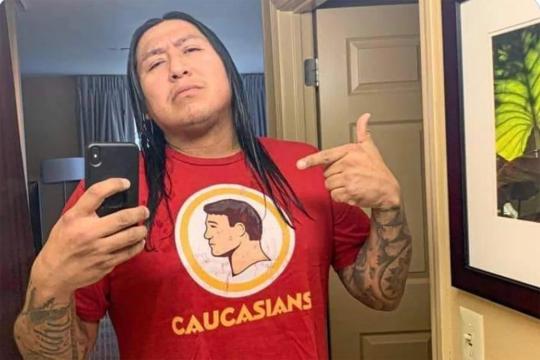


_____________________
We eat this shit up, fighting whites one went on sale, sold out really fast and the money went to a scholarship program for indigenous students I think, it's in the link and they should make them again if you ask me.
19 notes
·
View notes
Text

The History of Zombie Road
Zombie Road has quite a reputation as a place where shadowy figures and other non human entities have long been reported.
Gregory Myers of the Paranormal Task Force presents this piece on the history and deaths of one of the most haunted locations in the United States.
Within the urban sprawl of St. Louis lies a remote area called “Zombie Road”. Urban Legend tells a variety of eerie tales which include being host to ritualistic and occult practices which spawned inhuman and demonic entities while other tales tell of those who met their peculiar demise and still roam this desolate road in the afterlife.
“Zombie Road”, real name “Lawler Ford Road” is about 2 miles long through a valley of forest oak land hills and ends near the Meramec River in the Glencoe, MO area where it meets the newly established “Al Foster” trail.
The history of this area goes back to ancient Native American times where this was one of the few pathways cut by nature over the centuries through the bluffs to the Meramec River area just beyond them. It is believed that travelling ancient Native Americans used this pathway for foot travel and also quarried flint here for the making of various tools and weapons.
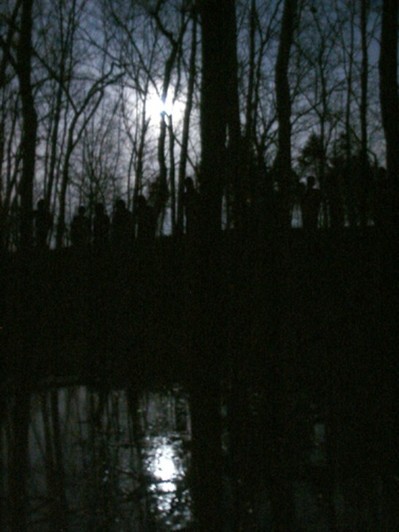
In the early 1800’s a Ferry (boat) was operated at the bottom area of this passage at times where a ford was located in the river for settlers and travellers to cross the Meramec River to the other side where the Lewis family owned much of the land. The origin of the road name is unknown to historians even today.
Ninian Hamilton a settler from Kentucky was the first settler to occupy and own land in this area in 1803. After his death in 1856, James E. Yeatman a prominent St. Louis citizen, a founder of the Mercantile Library and president of the Merchants Bank acquired the large parcel of land that Mr. Hamilton settled and owned.
The Pacific Railroad completed their railroad line from St. Louis to Pacific along the Meramec River in this area in the 1850’s. Della Hamilton the wife of Henry McCullough, who was Justice of the Peace for about thirty years and Judge of the County Court from 1849 to 1852, was struck and killed by a train in this area in 1876.
The first large scale gravel operations on the Meramec River began at what would become Yeatman junction in this area. Gravel was taken from the Meramec River and moved on rail cars into St. Louis. The first record of this operation is in the mid-1850’s. Later, steam dredges were used, to be supplanted by diesel or gasoline dredges in extracting gravel from the channel and from artificial lakes dug into the banks. This continued until the 1970’s.
From about 1900 until about 1945, Glencoe and this area was one of the resort communities of the Meramec River’s clubhouse era. Many of the homes were summer clubhouses, later converted to year round residences then lost to the great local floods of the 1990’s.
Some say this is called Zombie Road because the railroad workers who once worked here rise from their graves at times to roam about. Some insist that they have heard old time music, seen anomalous moving lights and other ghostly sightings from that forgotten era. Another tale tells of a patient nicknamed “Zombie” who escaped from a nearby mental facility never to be seen again. His blood soaked gown was later found lying upon the old road later named after him.
Other tales include one of an original settler who met their demise upon the railroad tracks. Another includes a pioneer who lost his wife in a poker game then went back to his homestead and took his own life. Many still report seeing these lonely spirits even today.
During the age of Prohibition a nearby town housed speak-easies and the summer homes of well known gangsters. Tales tell of individuals who were dealt a bad hand by such public enemies resulting in their permanent placement within the ground or bordering river to never be seen again.
The bordering river has tragically delivered many to the other side through the years. Children and adults alike have taken their last living breath within its dangerous waters before being found washed up on its shores. Even during this new millennium, several children met their demise one day within its banks.
The railroad still shows “Death hath no mercy” as many have met their final fate upon its tracks. Local lifelong residents can still remember multitudes of tragic occurrences dating back to the 1950’s. One of these occurred in the 1970’s when two teens were struck by an oncoming train. Some of the local residents were used in search parties to find the body parts scattered about the area.
During the 1990’s a mother and her five year old child were crossing a bridge when an oncoming train met them. The mother’s last action was pushing her five year old child off the bridge. The engineer was able to stop the train and save the child. Although the mother died, this is still one of the happiest endings to a story this area will provide.
More recent past has seen this area become refuge for those wanting privacy to practice the occult and other rituals. Who can really know what true doorways to the darkness or unknown were opened here.
During the 1960’s a couple in their late teens were on top of the bluffs overlooking the road below. The male somehow lost footing and during the fall caught his face in a fork of a small tree growing out from the side of the bluff. His face and scalp remained while the rest of him fell to his death upon the road below. Others have also met their demise from the high bluffs above.

The area has also seen its share of suicides and murders. In the 1970’s a hunter stumbled across a car still running at the end the road. Closer inspection revealed a hose running from the exhaust pipe to the inside of the car with the driver slumped over the steering wheel.
One can agree that there is no lack of legends or tragedies surrounding this area which can explain the bizarre and eerie encounters of those who visit. I was one who became truly intrigued and attracted by such lore and was determined to either prove or disprove the Urban Legends surrounding it.
Missouri Paranormal Research (now a division of Paranormal Task Force, Inc.), the paranormal investigative team I belong to, investigated this area on several occasions. Our visits converted many true skeptics into true believers of the paranormal. I was one of those the first time and even remarked “This was going to be like Winnie the Pooh looking for a ghost in 100 Acre Woods” prior to descending onto the old road.
Within an hour several people observed a human sized shadow figure as it descended upon them from a small bluff nearby. It then ran onto the road, stopped, then disappeared into the darkness of the night. Throughout the night others heard unexplained voices, were touched by the unseen and witnessed the unexplained. This was one night that everyone could conclude that indeed some Urban Legends actually are real!
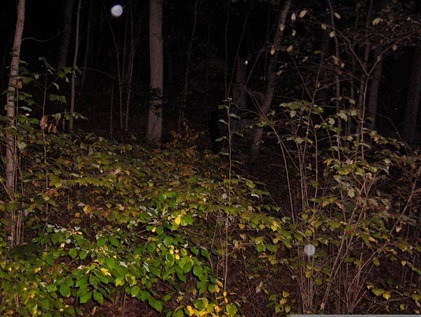
#history of zombie road#zombie road#ghost and hauntings#paranormal#ghost and spirits#haunted locations#haunted salem#myhauntedsalem#haunted roads
18 notes
·
View notes